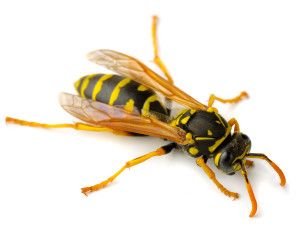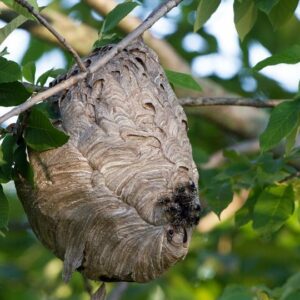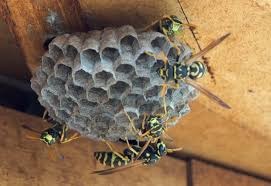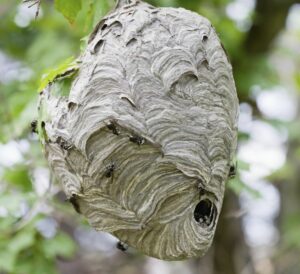Wasps

Insect Control: How to Get Rid of Wasps
It is helpful to determine where the nesting area is located but it is recommended to contact a pest control company to treat and remove the nest since these nests can be quite large. The most effective treatment for social wasps is to apply a dust insecticide to the entrance of the nest which will terminate the insect within 24 hours. We treat either exposed nests or nests inside a structure or the ground. Wasp nests are removed if at all possible. Miller Pest Control guarantees the wasp nest area for the duration of the season.
How to Identify a Wasp Infestation
Signs of infestation are dependent on species but most often the workers and the nest are the most common signs. Though it is recommended to leave it to a professional to properly identify the particular species living near your home, here are a few facts that might help you identify your pest.
Wasps
- Wasps have a distinct head with chewing mouthparts, short elbowed antennae, and large compound eyes.
- The thorax and abdomen are marked with yellow, red or brown on a black background.
- The wasps have four clear or smokey brown wings and a long stinger.
- They vary greatly in size from almost microscopic to a few centimetres long.
- Wasps are generally classified into two groups: social wasps and solitary wasps.
- Most solitary wasps construct their nests below ground, while most social wasps will build nests above ground.
Yellow Jackets
- Yellowjackets are usually marked with bright yellow and black patterns and are about 3/8 to 5/8 inches long.
- Their wings are as long as the body and fold laterally when at rest.
- These social wasps live in colonies that may contain thousands of insects at a time.
- Yellowjackets usually build their nests below ground and in other protected locations.

Paper Wasps
- Paper wasps (Polistes dominulus) are similar in appearance to yellowjackets, although they typically appear darker.
- They are also more slender and have longer legs than yellowjackets.
that hang down when they fly. - Paper wasps build small paper comb nests that are not enclosed in
a papery covering and house about 250 wasps. - Their nests hang upside down by a small stem, lending them the occasional name of umbrella wasps.

Bald-Faced Hornet
- Bald-faced hornets (Dolichovespula Immaculate) are mostly black with white patterns on the face, first antennal segment, and posterior tip.
- They build large nests covered with a thin papery envelope that is easily torn.
- Nests are found in trees, lower shrubs, or attached to buildings and are about the size of a basketball by the end of the summer.

How to Prevent a Wasp Infestation
- Keep garbage cans closed and clean so that wasps are unable to feed on food residues.
- Keep fallen fruit from fruit trees cleaned up.
- Seal all potential entries with durable materials, like metal screen and caulk.
Possible Health Concerns
The most common health concern related to wasps is stings, which may induce severe allergic reactions in some individuals.
About Wasps
There are over 100,000 species of wasp. Two common species are the yellow jacket wasp and the hornet.

